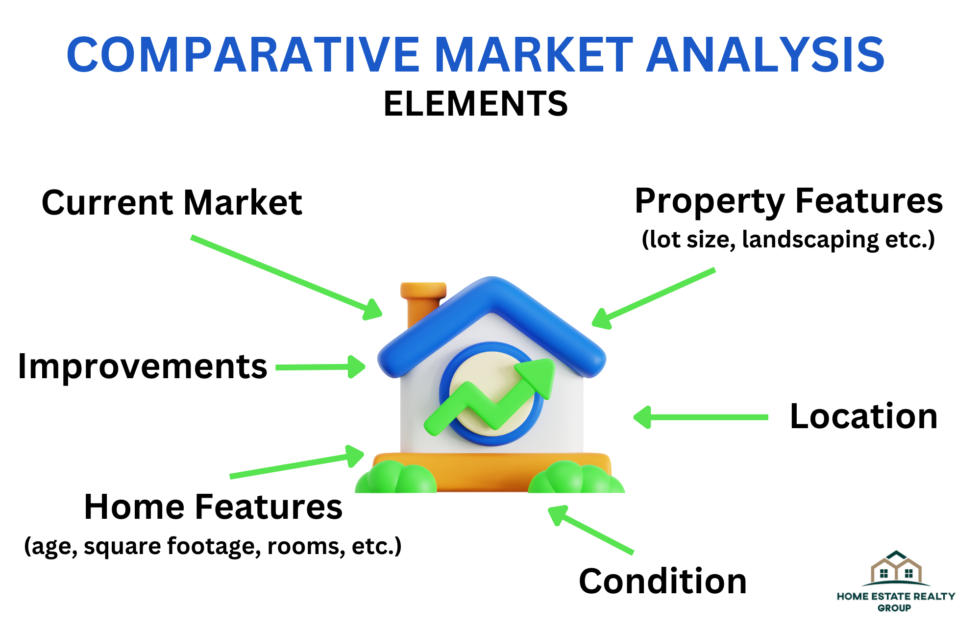When it comes to home selling, most agree that the highest price in the least amount of time is a dream come true. This is most often accomplished by getting multiple offers on the home. Furthermore, the two most critical factors that lead to multiple offers are preparation and pricing. We covered Staging for Multiple Offers in a previous article. Here is how to determine home pricing for multiple offers.

BENEFITS OF MULTIPLE OFFERS
Multiple offers in home sales can be beneficial for several reasons. Firstly, having multiple offers indicates a high level of interest in the property, which can create a sense of competition among potential buyers. This competition can drive up the final sale price, potentially resulting in a higher selling price for the seller.
Additionally, multiple offers provide the seller with more options and negotiating power. They can compare the terms and conditions of each offer and choose the one that best suits their needs. This may include factors such as the offer price, financing terms, contingencies, and closing timeline.
Furthermore, multiple offers can expedite the selling process. If one offer falls through or encounters delays, the seller may have access to backup options to fall back on, reducing the risk of the property sitting on the market for an extended period.
However, it is important to note that multiple offers also come with their own considerations. Evaluating and managing multiple offers can be time-consuming and require careful attention to detail. It is advisable to work with a real estate professional who can guide you through the process and help you make informed decisions.
https://youtu.be/AsdqyUtFMbARELATED VIDEO
HOW IS A HOME PRICE CALCULATED
1. Market conditions: The current state of the real estate market, including supply and demand dynamics, interest rates, and economic factors, can significantly impact the selling price. In a seller’s market with high demand and limited inventory, prices tend to be higher, while in a buyer’s market with more supply and less demand, prices may be lower.
2. Comparable sales: Real estate agents and appraisers often look at recent sales of similar properties in the same neighborhood or area to determine a home’s value. These comparable sales, or “comps,” provide a benchmark for pricing the property based on what similar homes have sold for.
3. Property characteristics: The specific features and condition of the home can also affect its selling price. Factors such as the size, layout, number of bedrooms and bathrooms, upgrades, amenities, and overall condition of the property can influence its value.
4. Location: The location of the home plays a crucial role in determining its selling price. Factors such as proximity to schools, amenities, transportation, and desirable neighborhoods can impact the perceived value of the property.
5. Seller’s motivation and pricing strategy: The seller’s motivation to sell and their pricing strategy can also influence the selling price. A seller who needs to sell quickly may be more willing to accept a lower price, while a seller who is not in a rush may hold out for a higher offer.
It’s important to note that determining the selling price is a complex process that often involves the expertise of real estate professionals, such as agents and appraisers, who can provide a comprehensive analysis based on market data and their knowledge of the local area.

COMPARATIVE MARKET ANALAYSIS
A Comparative Market Analysis (CMA) is a tool used in real estate to determine the value of a property by comparing it to similar properties that have recently sold in the same area. It is a comprehensive evaluation that takes into account various factors such as location, size, condition, amenities, and recent sales prices of comparable properties.
To conduct a CMA, real estate professionals gather data on recently sold properties that are similar to the subject property in terms of location, size, and features. They analyze this data to identify trends and determine a fair market value for the property being evaluated.
The CMA report typically includes a list of comparable properties, their recent sale prices, and any adjustments made to account for differences between the subject property and the comparables. It provides valuable insights into the current market conditions and helps sellers and buyers make informed decisions about pricing and negotiations.
It’s important to note that a CMA is not an appraisal, which is a formal valuation conducted by a licensed appraiser. However, a CMA can be a useful tool for both sellers and buyers to understand the market value of a property and make informed decisions in real estate transactions.
BOTTOM LINE
Pricing your home Remember, pricing your home accurately is crucial to attract potential buyers and maximize your chances of a successful sale. Working with a knowledgeable real estate agent can provide valuable guidance throughout the process.
WANT HELP GETTING YOUR HOME READY FOR SALE?
CONTACT US:


